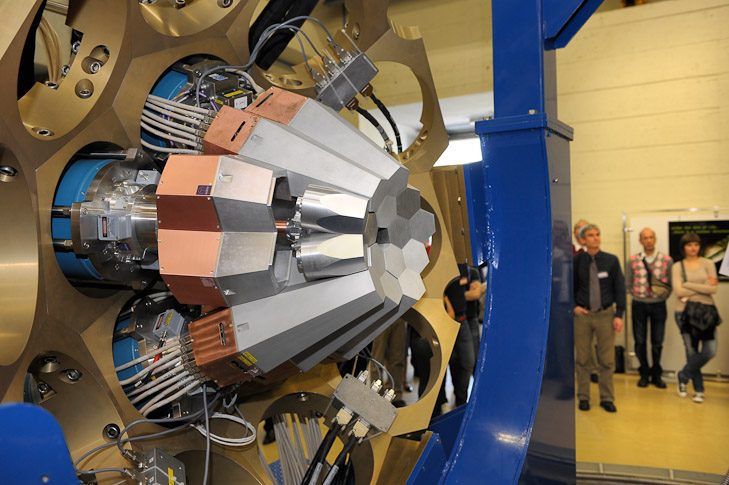Advanced GAmma Tracking Array
Experiments with RIBs have large impact on our knowledge of fundamental nuclear properties. Therefore, since years, at an European level, people of many countries started the AGATA project aiming at building and using a cutting-edge array for gamma spectroscopy. AGATA is a Germanium based modular detector made of highly segmented crystals: this solution, together with the use of very specific digital sampling electronics and efficient algorithms, permits gamma-ray tracking with unprecedented performances in terms of Compton rejection and efficiency.
AGATA is a robust and well organized initiative, whose programs encompass experiments in the main european labs. Now the first three triple modules of the Demonstrator are installed at LNL and several experiments with PRISMA have been conducted in 2009 and 2010. In the next future other two modules should be definitely provided thus reaching the complete Demonstrator scheme.
The absolute relevance of the AGATA tracker of course makes synergies very intense with many groups and laboratories. This fact reflects in the full agenda. The present LNL campaign should finish in july 2011, then AGATA should be transported to GSI. Next step will be to GANIL, by 2013. AGATA organization is well defined, it benefits of several panels and it is also ruled on the basis of many Memorandum of Understating and protocols.
AGATA activity foresees the use of so-called ancillary detectors which can be mounted in different configurations in order to select the products whose gamma emission is to be studied. The compatibility of these joint detectors with the electronics and triggering system of AGATA is an issue. Future ancillary apparatus are of course designed to assure this compatibility. In this respects, motivated by the richness of accessible physical, AGATA has strict contacts with the future NEDA and TRACE initiatives or with already present arrays (PRISMA, DANTE).

Contact person: dr. D.R. Napoli
http://www-win.gsi.de/agata/overview.htm

